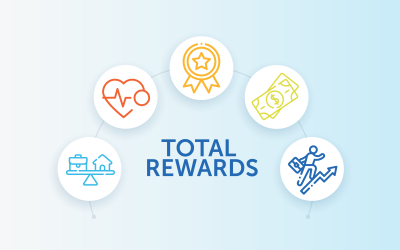If you’ve been in the business world long enough, you hear the term “benchmarking” tossed around quite a bit. According to Bain & Company, “The objective of benchmarking is to find examples of superior performance and to understand the processes and practices driving that performance.” Do the same objectives hold true for human resources (HR)? They do, for sure.
HR executives and manager alike have questions about their environment and competitors, and benchmarking offers a path to some of the answers. For example, you may be wondering:
- “How does my organization compare to our peers, our contemporaries, or the industry?”
- “What are the hiring trends in our region?”
- “Is our industry experiencing a skills shortage or surplus?”
- “What is the average salary for the positions for which we are currently hiring?”
Human resources benchmarking refers to the process of conducting a search for, and adopting, the best practices in human resource management. Some of these best practices may be in the areas of recruitment, employee motivation and retention, and the most effective HR strategies in helping organizations to achieve positive financial outcomes on a continuous basis. In other words, HR benchmarking gives you the opportunity to learn from the best and avoid the mistakes of those who learned their lessons the hard way.
Benchmarking Steps
Once you’ve decided to take on a benchmarking assessment, here are some steps to achieving that goal:
- Understand your organization or department’s current capabilities.
- Assess your HR performance relative to overall business value and strategy.
- Study the best practices (and mistakes) of companies in your industry, of the same size, in the same region, or other variables that form a method of comparison.
- Identify and prioritize improvement opportunities that offer the greatest potential return.
- Highlight and address areas of risk.
- Plan, manage and execute your journey to improved performance and effectiveness.
For many organizations, step three presents a challenge. How do you organize data for using external benchmarks as a litmus test of where you want to be?
A wealth of information exists that can be used for a benchmarking assessment. For example, you could comb through reams of data from the U.S. Department of Labor. Or, you could subscribe to benchmark services from suppliers like Burning Glass Technologies. Research firms, such as Bersin Partners, offer this information, too.
While all of this data is useful for benchmarking, it creates yet another mountain of data to wrangle. And, if you really want to leverage the benefits of benchmarking over the long run, you’ll probably want to create a steady flow of HR benchmarking data for continuous improvement.
That’s where the ZeroedIn platform comes in. Our clients can input data that aligns to their measurement needs directly into the platform. That data can be manually entered or electronically fed from another source, such as a benchmark or data clearinghouse.
By incorporating benchmarking data into their workforce analytics tools, our clients have a simple way to compare themselves against the norm and take action as needed. What will your benchmarking data say about your company’s position in the marketplace? Schedule a demo, and start building your targeted benchmarking data stream today.



